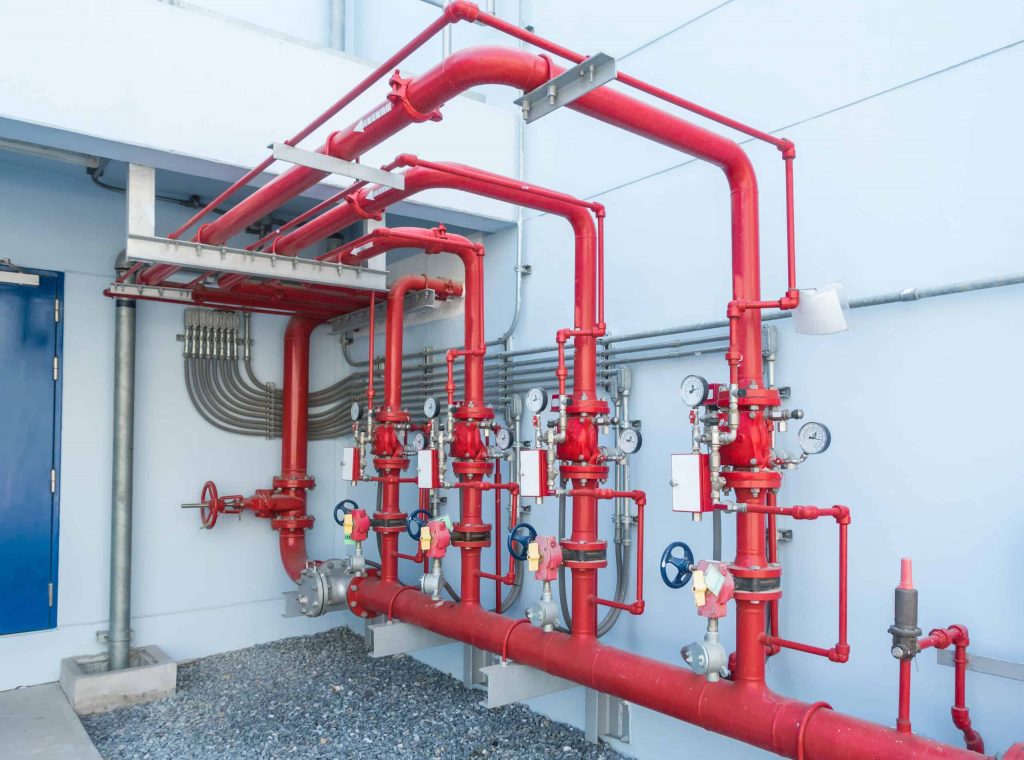

DELUGE SYSTEM
A deluge system is a fire suppression system designed for high-risk fuel hazards. It uses multiple sprinklers that activate at once. The system has open sprinkler heads and unpressurized dry pipes connected to a water supply. When triggered, a deluge valve releases water to all the sprinklers simultaneously.
Deluge systems can release various fire-suppressing substances like dry powder, foam, chemicals, or inert gases. The system remains dry until the deluge valve is activated by an electric, pneumatic, hydraulic, or manual trigger. Once activated, the system floods the area with pressurized water or another fire suppressant. Deluge systems are used in high-risk areas like chemical plants, aircraft hangars, and power plants. They are effective because they simultaneously release the suppressant to all sprinkler heads, quickly controlling the fire.

Any One or A Combination of The Following Are The Primary Goals of Using Deluge Systems.
- Extinguishment of fire
- Control of burning
- Exposure protection
- Prevention of fire
Benefits of Deluge Fire Sprinkler Systems.
Deluge fire sprinkler systems use open nozzles and non-pressurized pipes, unlike traditional systems with closed nozzles and pressurized lines. When activated, a control valve opens, flooding the system with water that is discharged through all nozzles. These systems are ideal for areas that require a large volume of water to control a fire, such as aircraft hangars, oil extraction facilities, and places storing flammable materials. Deluge systems provide excellent fire control and can also be used with foam concentrate for added effectiveness.

How is A Deluge System Activated?
In a Deluge system, the sprinkler heads work together and activate simultaneously when triggered by heat or smoke detectors. When activated, the valve opens, allowing water to flow through the pipes and out of the sprinkler heads. The system can be activated through hydraulic, pneumatic, electric, or manual methods, depending on the type of system. However, the Deluge Valve itself can only be activated hydraulically.
What Are The Types of Deluge Systems?
There are different types of Deluge systems. One type is electronically operated, where an alarm triggers a solenoid valve, releasing water to activate the Deluge Valve and deliver water to the threat. Another type is pneumatic, where a detection line with sprinkler heads releases air when activated by fire, which opens the Deluge Valve to release water. Deluge valves can also be used with foam instead of water, depending on the type of threat being protected.
Does My Building Need A Deluge Fire Suppression System?
A licensed fire protection company should be able to answer this question. Choose a fire protection company with experience dealing with Deluge systems. The type of fire suppression system used to protect your building should be chosen based on a number of criteria, namely the size of your building and the hazard it protects.
AITO has a team of qualified engineers who possess the technical expertise and capabilities required for the role.


